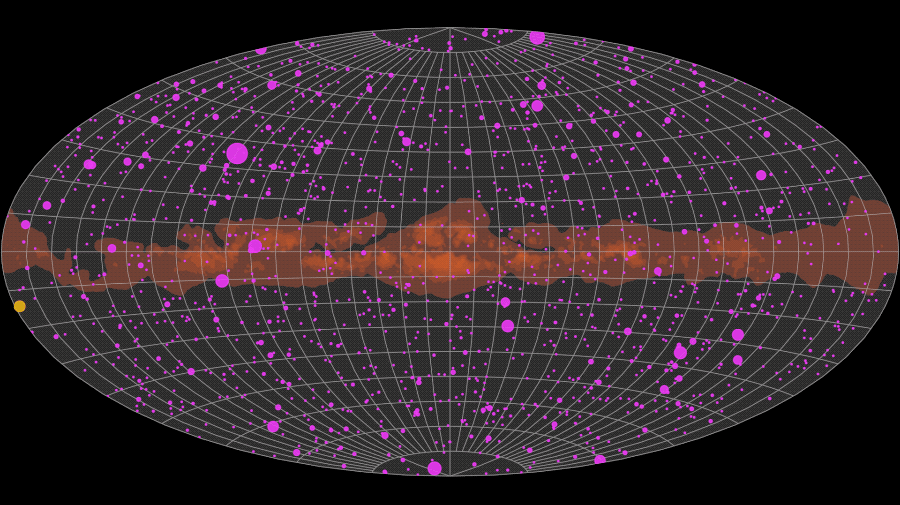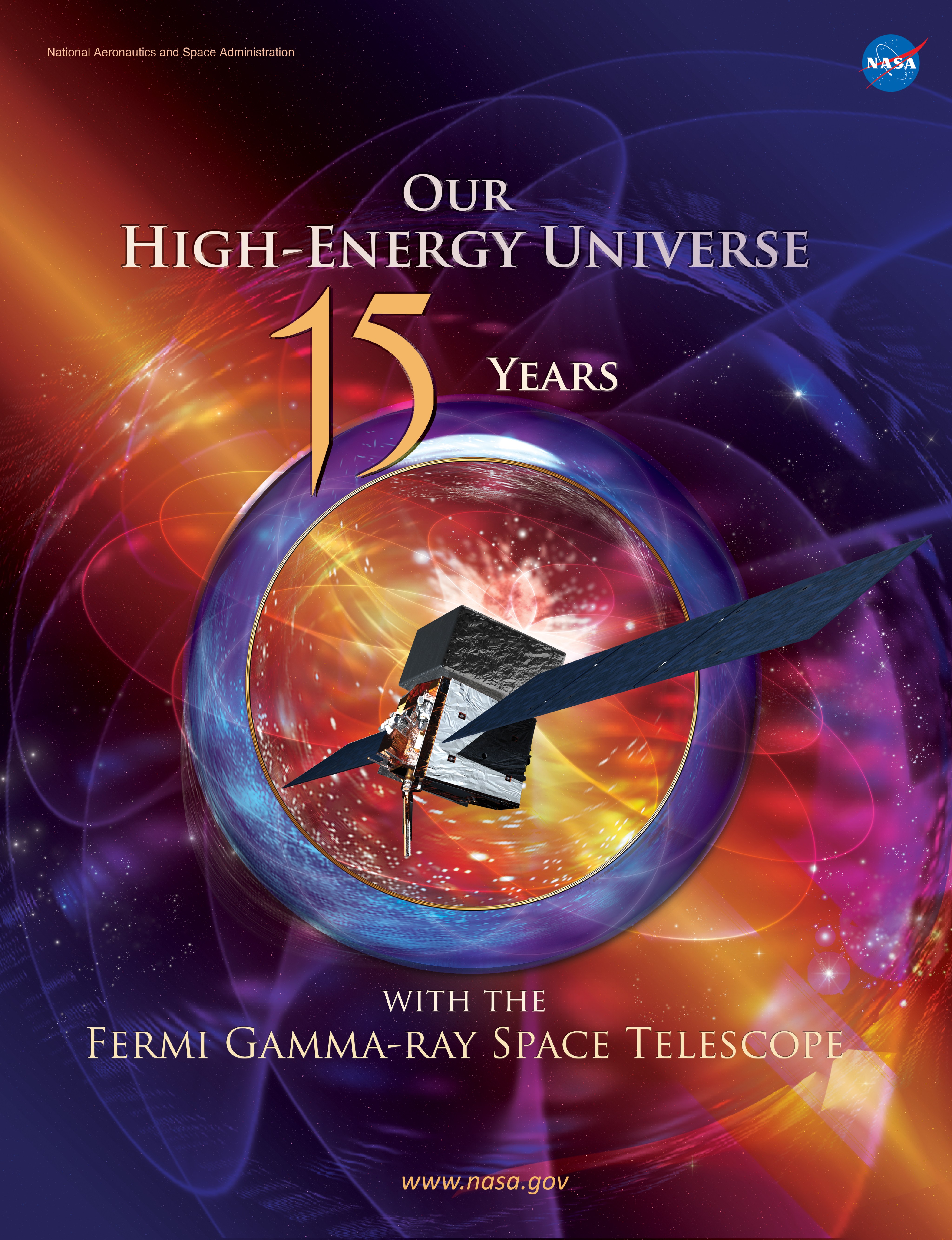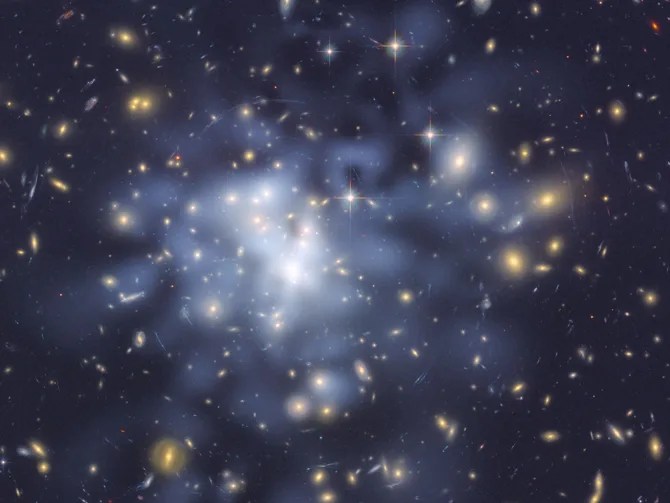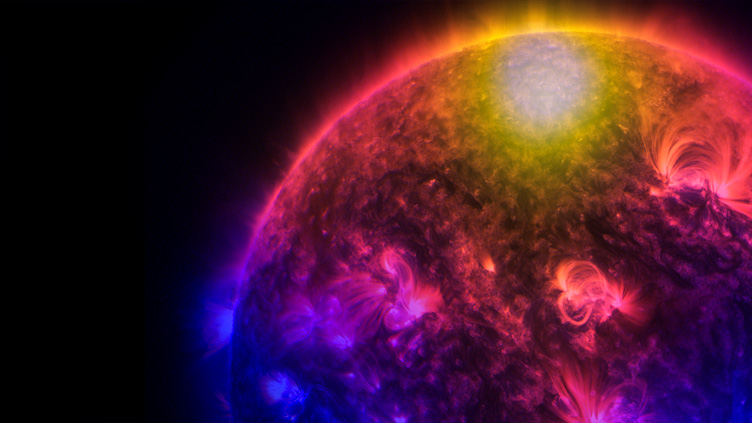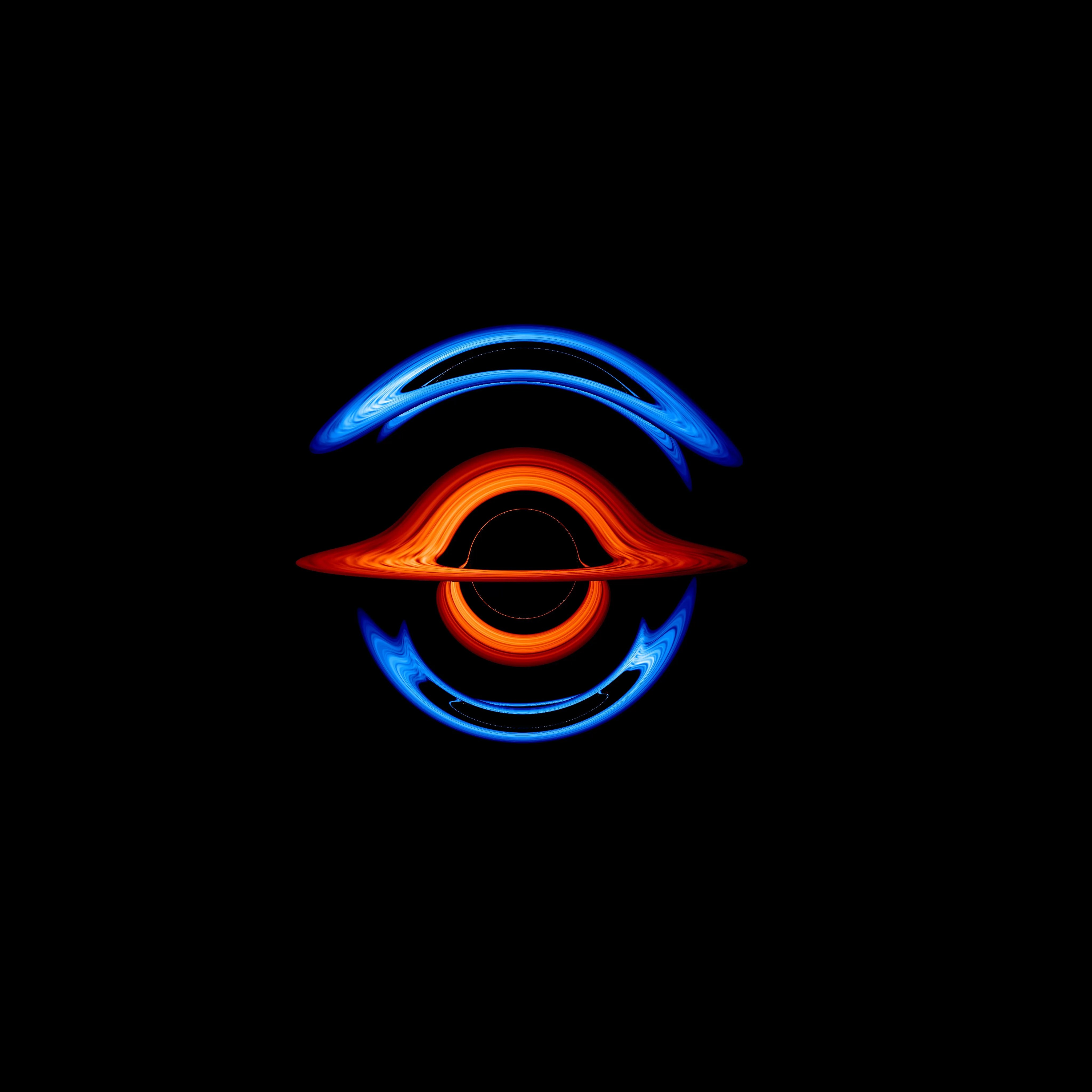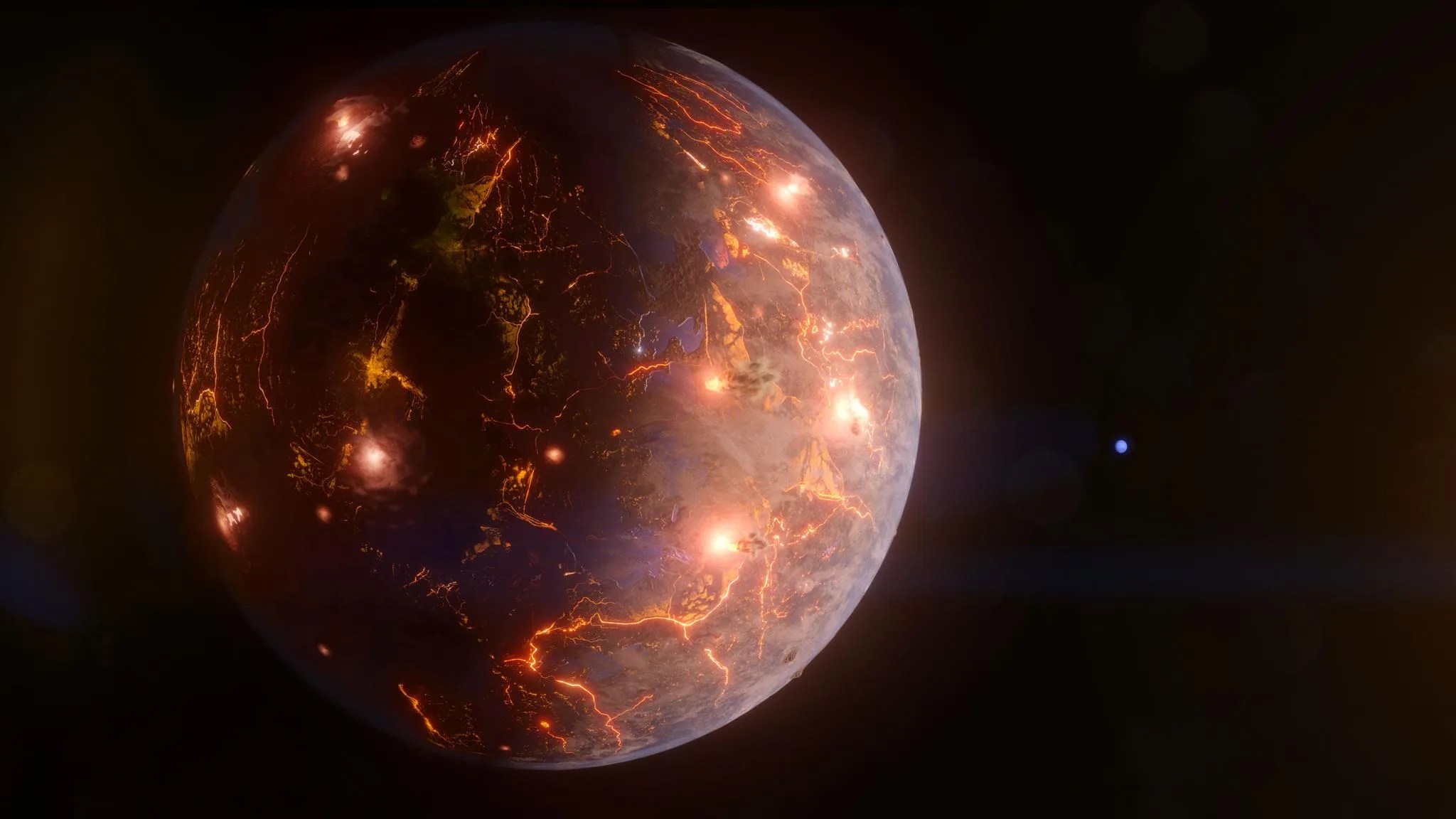Fermi
Fermi Gamma-ray Space Telescope
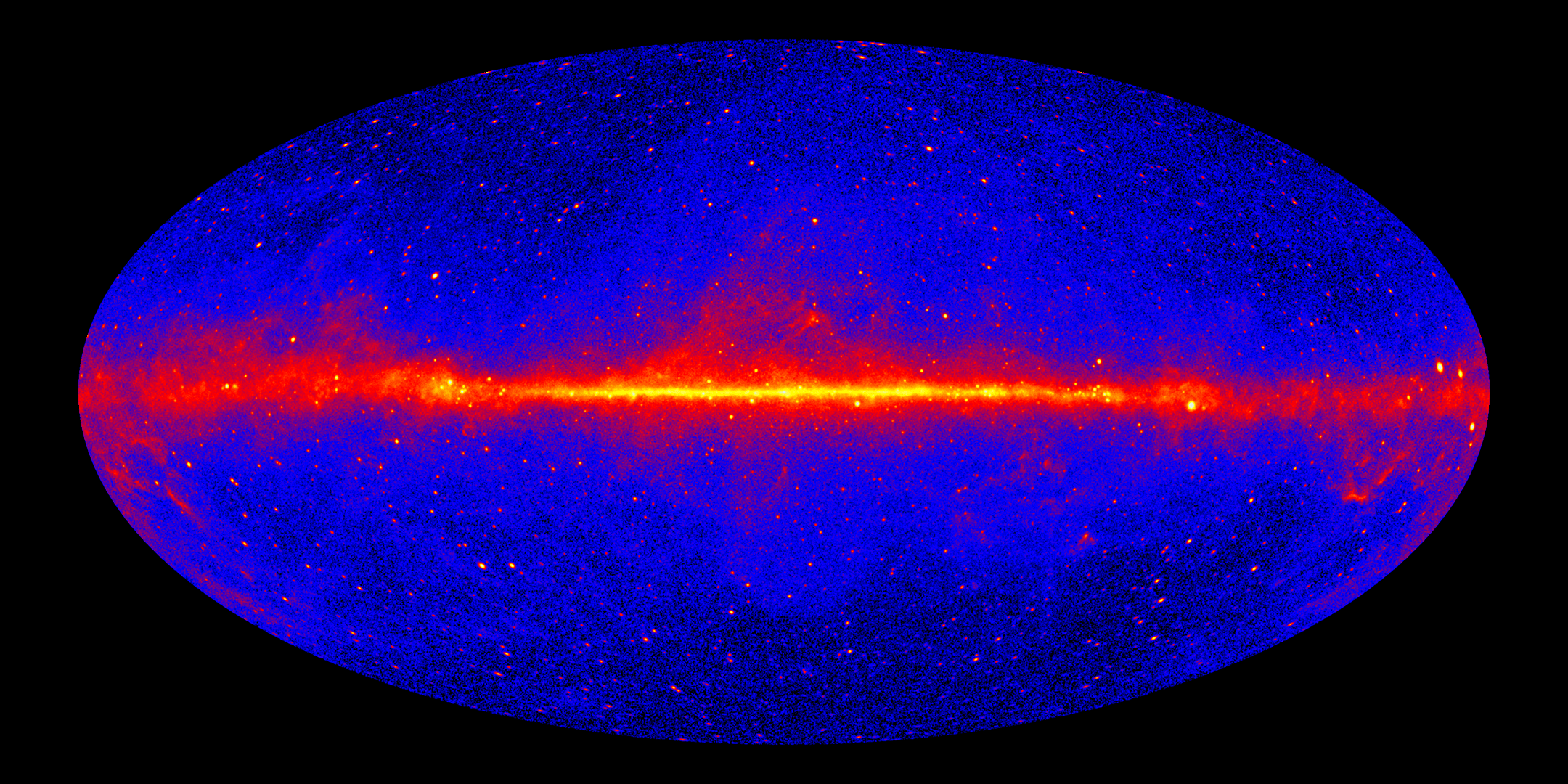
Overview
Fermi observes light with energies thousands to hundreds of billions of times greater than what our eyes can detect. The energy of the light we can see ranges from about 2 to 3 electron volts. Fermi observes light in the energy range between 8,000 electron volts (8 keV) to greater than 300 billion electron volts (300 GeV). As a result, the gamma-ray sky looks spectacularly different than the one we see at night, as shown in the image at the top of the page constructed from 12 years of Fermi observations greater than 1 GeV.

The satellite launched on June 11, 2008, as the Gamma-ray Large Area Space Telescope. Shortly thereafter, NASA renamed the observatory in honor of Professor Enrico Fermi (1901-1954), a pioneer in high-energy physics.
Since then, Fermi has discovered more than some 300 gamma-ray pulsars, including the first one found beyond our own galaxy. Fermi has shown that giant flares from supermagnetized neutron stars can be detected in galaxies beyond our own. Its measurements have provided important limits on new theories of gravity and of the nature of dark matter, the mysterious substance that seems to bind galaxies together. Fermi data revealed a vast new component of our galaxy known as the Fermi Bubbles, a structure that spans 50,000 light-years and likely formed as a result of an outburst from the monster black hole at the center of our galaxy.

Fermi observed the first light ever seen from an event with detected gravitational waves – the merger of two neutron stars. And for the first time, Fermi data enabled scientists to backtrack a high-energy neutrino to its source – a black-hole-powered galaxy located billions of light-years away.
The spacecraft and the instruments aboard Fermi remain in good health and continue to monitor the sky.
Fermi is an astrophysics and particle physics partnership, developed in collaboration with the U.S. Department of Energy, along with important contributions from academic institutions and partners in France, Germany, Italy, Japan, Sweden, and the U.S.
NASA’s Fermi Captures Dynamic Gamma-Ray Sky in New Animation
Cosmic fireworks, invisible to our eyes, fill the night sky. We can get a glimpse of this elusive light show…
Read the Story